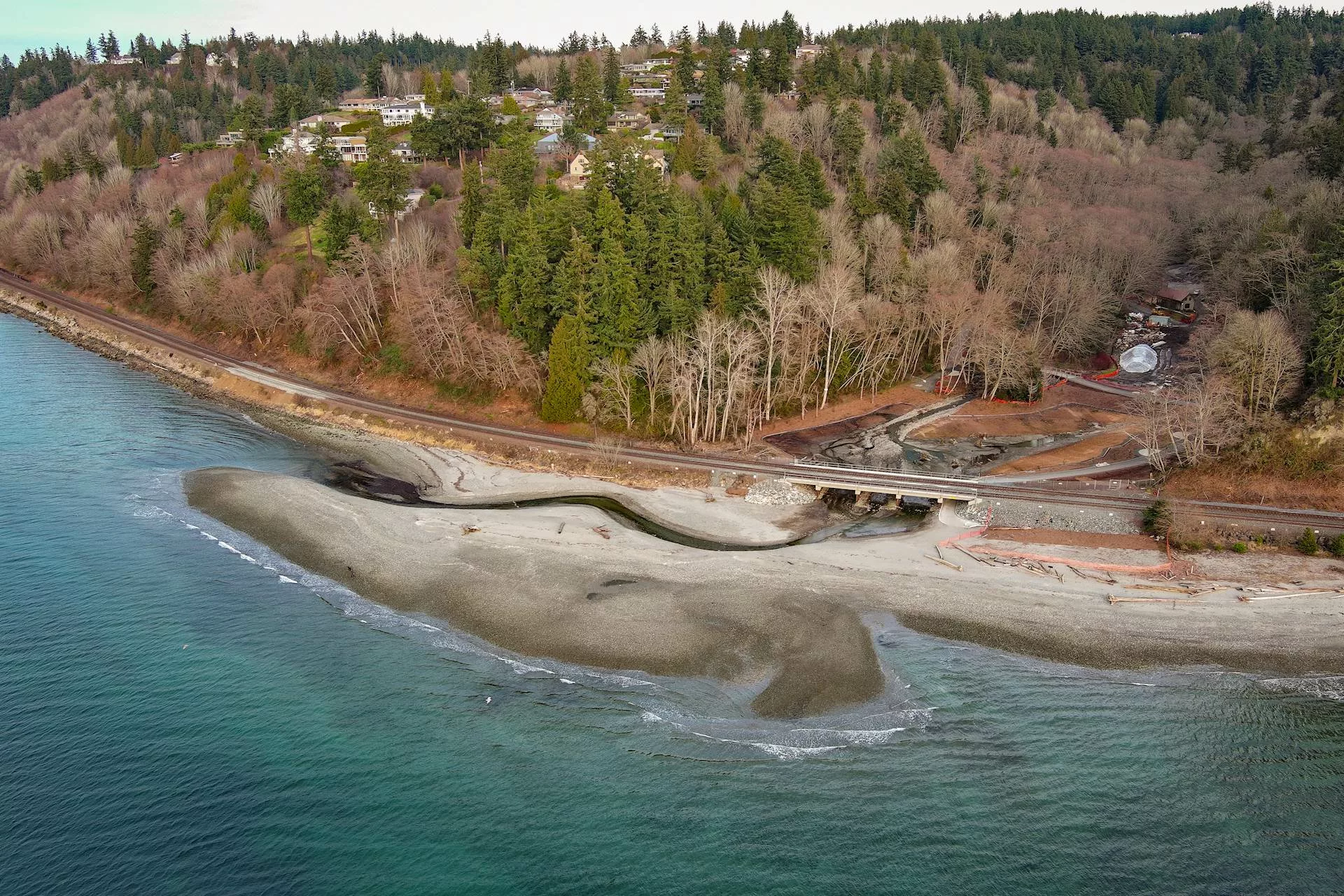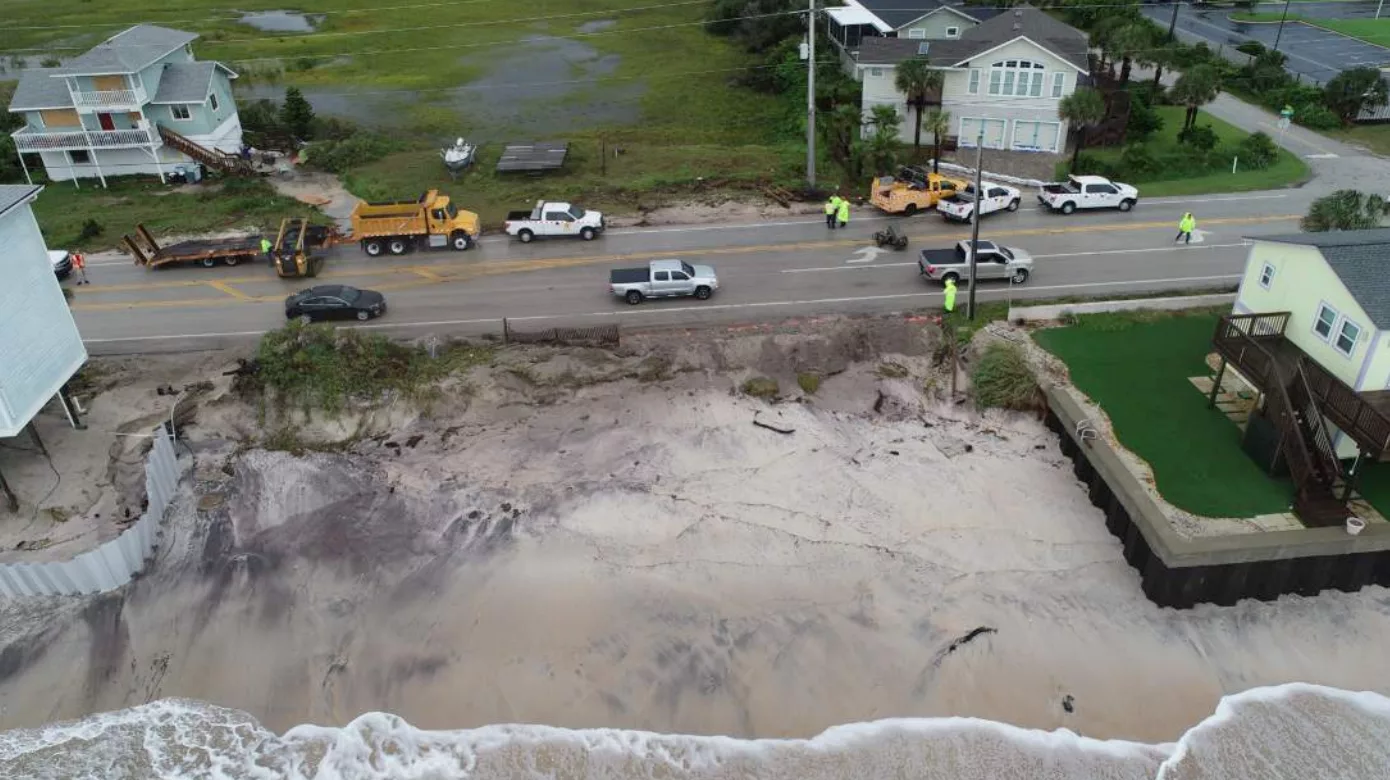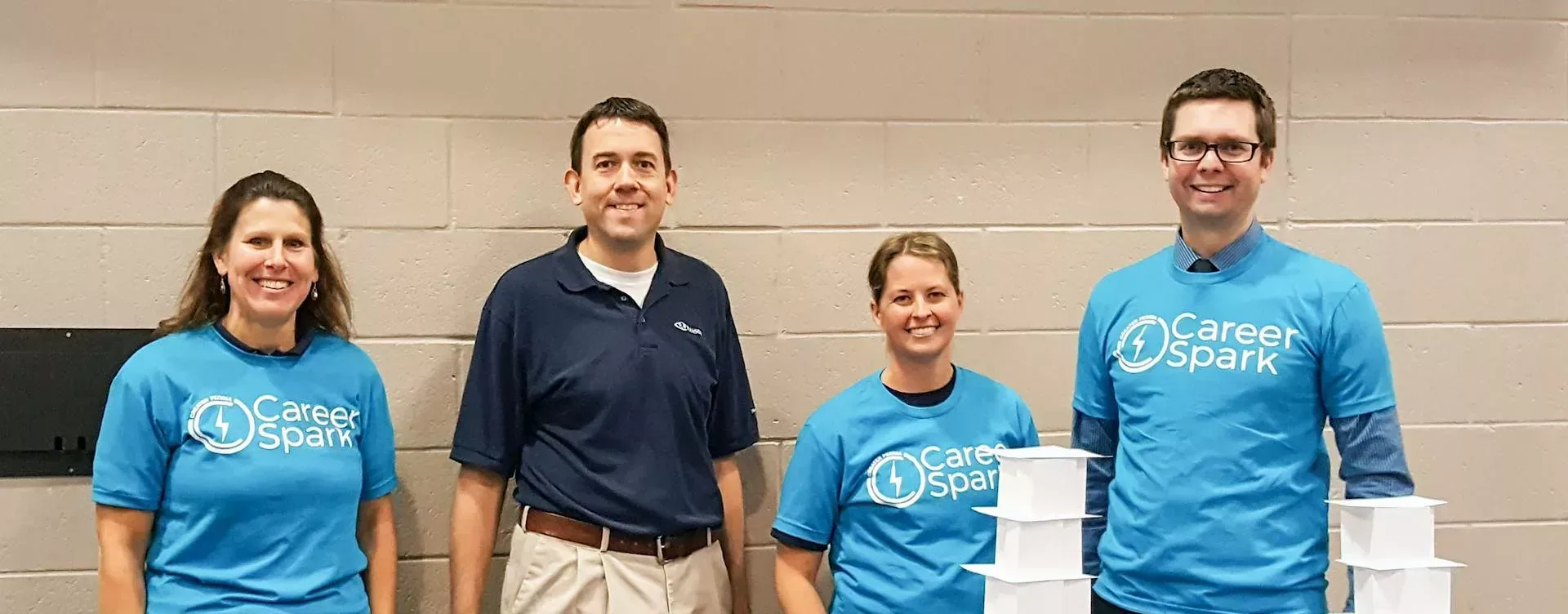
The BNSF Sandpoint Junction Connector in Sandpoint, Idaho, was recognized by the American Society of Civil Engineers (ASCE) as an Outstanding Civil Engineering Achievement (OCEA) Honor Award winner at ASCE’s Outstanding Projects and Leaders Awards Gala on Jan. 16 in San Diego. Hanson Senior Vice President and Railway Market Principal Mat Fletcher, P.E., S.E., P.Eng., from the Peoria, Illinois, office, and Associate Project Manager Tristan Rickett, P.E., from the Seattle regional office, accepted the award on behalf of the project team and our client, BNSF Railway Co.
The BNSF Sandpoint Junction Connector was one of 11 projects recognized by ASCE. “The projects nominated for ASCE’s OCEA awards advance innovation, technology, resilience and ingenuity as civil engineers build the infrastructure of the future,” said Marsia Geldert-Murphey, P.E., ASCE’s past president.
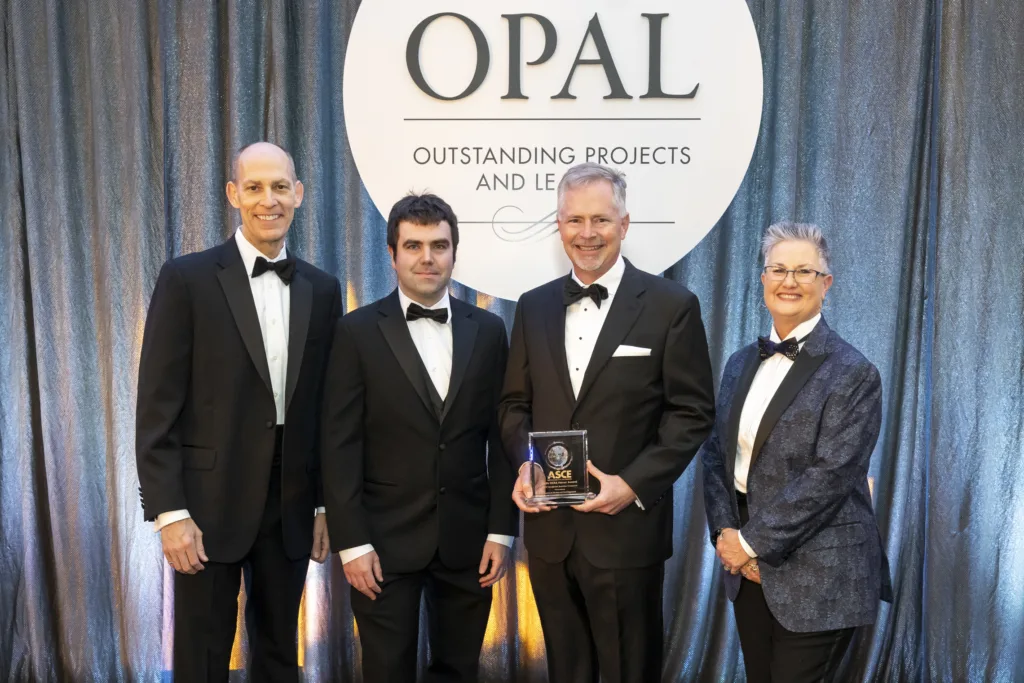
New bridge enhances key national supply chain route
Sandpoint is home to a significant amount of transcontinental freight rail traffic. BNSF’s mainline track in Sandpoint merged with the Montana Rail Link before spanning Lake Pend Oreille as a single track. More than 60 freight trains crossed the lake on this track daily. Many trains traveling in either direction had to slow down or stop as they waited while trains crossed the bridge one at a time.
The connector is a key location on BNSF’s Northern Corridor from Chicago to ports in the Pacific Northwest. BNSF owns more than 130 miles of track in Idaho and transports nearly 1.5 million carloads of freight in the state every year.
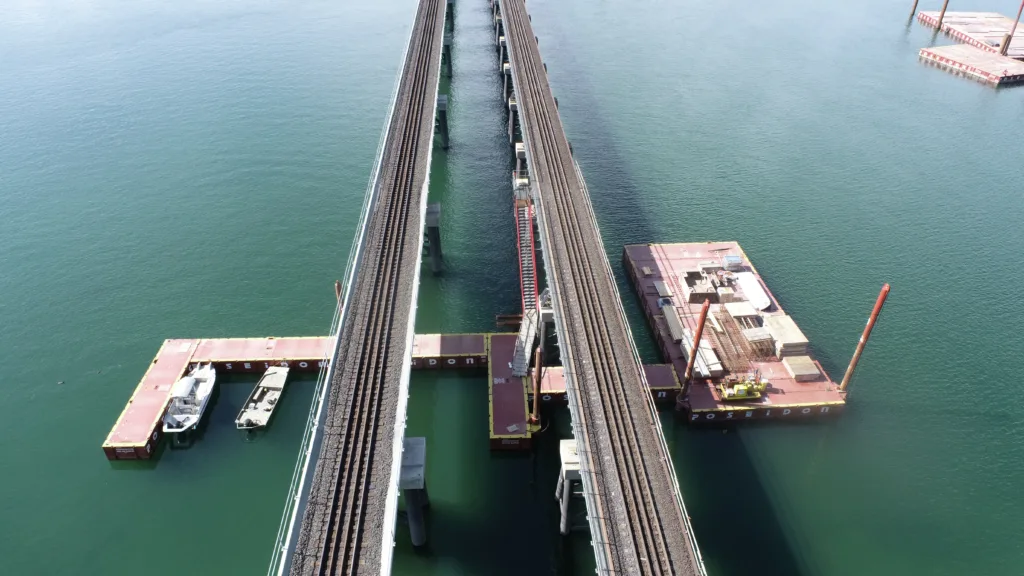
To provide additional rail capacity and increase network resiliency, BNSF, Hanson and Ames Construction collaborated to design and build a more than 2.5-mile stretch of second main track, including a 4,875-foot-long bridge over Lake Pend Oreille, the state’s largest lake. Constructing the bridge adjacent to the active rail bridge over the pristine lake, a popular tourist and recreation location, required an innovative and environmentally conscious approach.
Hanson was the lead design engineer for this project and provided on-site construction contract administration services. The Hanson team included permitting support from Jacobs and geotechnical engineering from Delve Underground.
Support of the public-use areas along the project site was paramount and resulted in an initial phase of work to construct a pedestrian and bicycle tunnel below the primary construction entrance. The area has many walking and biking paths, including the popular Serenity Lee Trail. This trail is a 2-mile-long walking and bike path that crosses the lake and parallels U.S. 95. It was important to keep this area safe for community residents, tourists and recreational and outdoor enthusiasts.
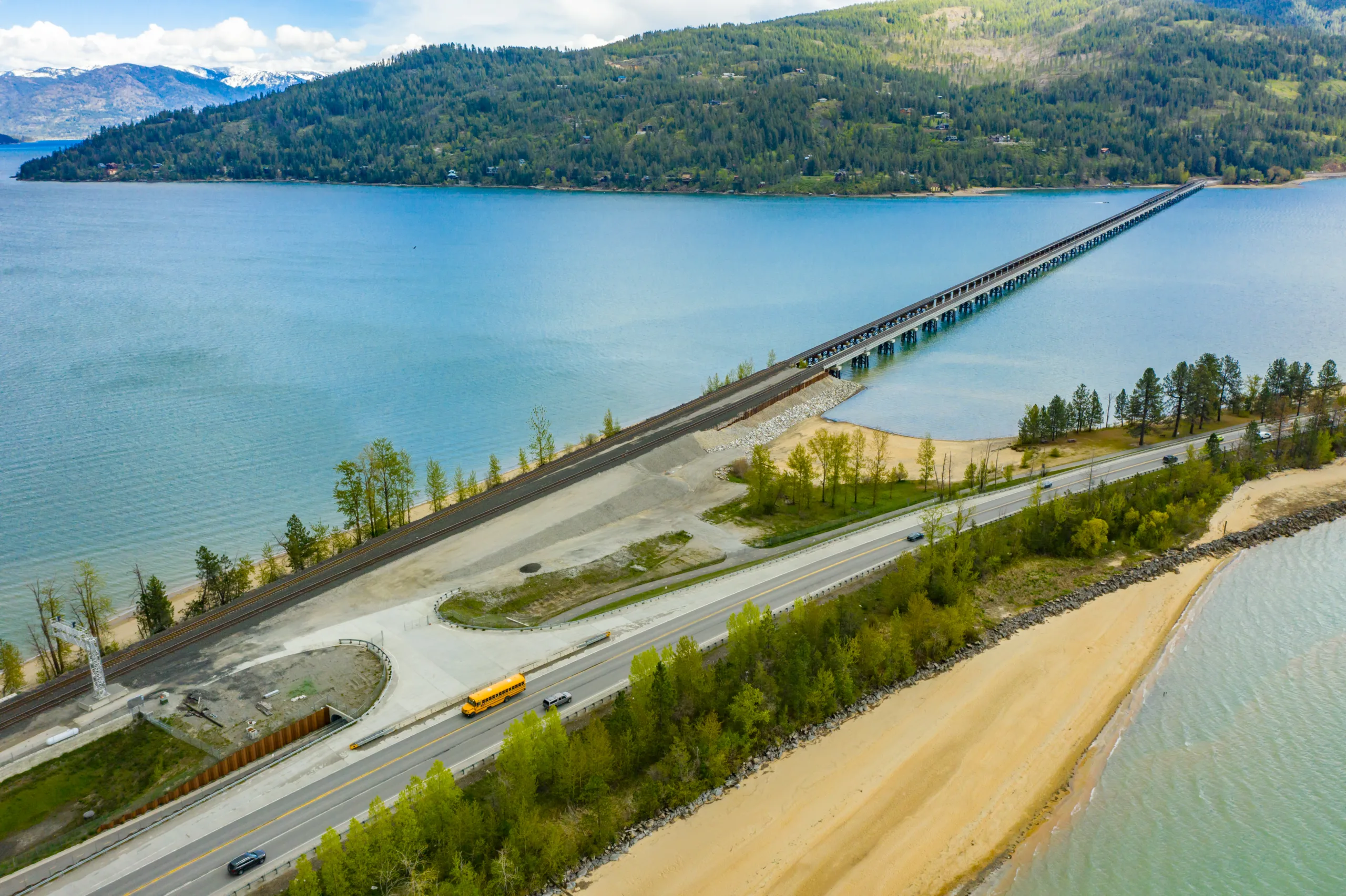
Project requires innovative, environmentally conscious approach
During construction, Hanson used innovative bridge-monitoring technology to detect track movement on the nearby original, operating bridge and gathered ongoing drone footage to monitor construction and progress. Additionally, two Hanson employees worked on-site throughout the project, providing construction contract administration services and addressing any construction-related issues.
Because of Lake Pend Oreille’s environmental importance to the area and its recreational impact, the team focused on identifying regional best management practices and conducted extensive permitting to protect the lake, fish and other aquatic species. This included transporting construction equipment and materials on barges instead of building a temporary work trestle across the lake.
The project is being used as the new standard for state permitting requirements. The project team identified key elements of the environmental permitting process that will serve as an important reference for future projects, particularly those involving fish and U.S. Coast Guard requirements for boat clearance.
The soil conditions in the lake also presented challenges. The soil was so soft and sensitive that installing a pile caused a short-term reduction in soil strength. After conducting further analysis, the project team extended the pile length to nearly 240 feet in many locations, which solved the pile capacity challenge. Hanson also avoided spills in the lake by limiting the amount of cast-in-place concrete and protected fish by lowering the number of strikes per pile to reduce vibrations and noise. A key project goal was safeguarding the availability and enjoyment of clean water in Lake Pend Oreille.
To improve construction efficiency, the project design used nearly identical elements — supporting piles, precast concrete pier caps and prestressed concrete girders — for the Lake Pend Oreille bridge and two additional bridges in Sandpoint. BNSF provided funding for the $100 million capacity improvement, and the project was completed nearly a year ahead of schedule and on budget.
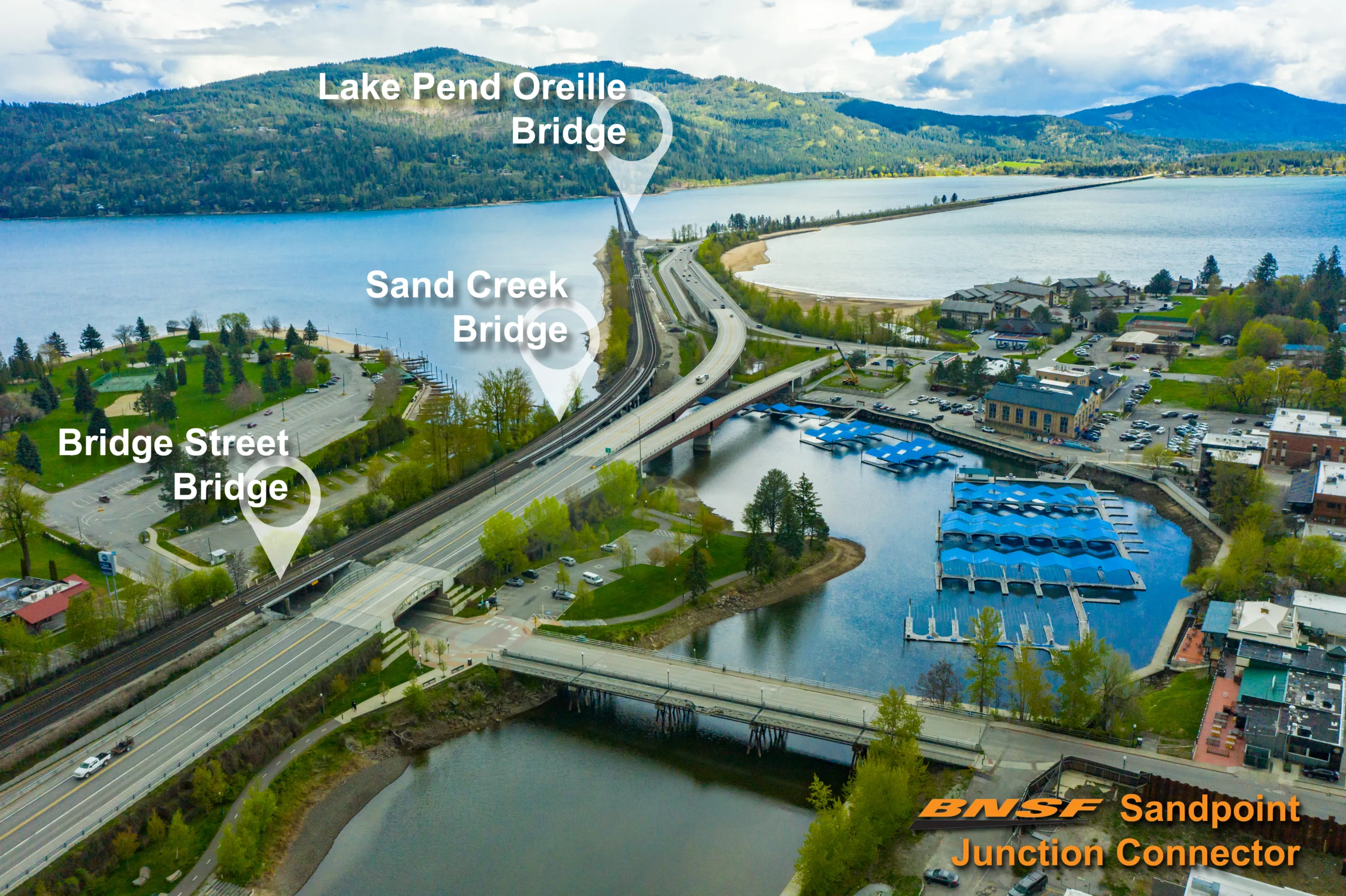
In addition to ASCE’s OCEA Honor Award, the project has received the following awards and recognitions: American Council of Engineering Companies of Illinois’ 2024 Special Achievement Award, ASCE Central Illinois Section’s OCEA Award, Engineering News-Record’s Mountain States 2023 Best Projects Award of Merit, RT&S Top Projects for 2024 and Roads & Bridges magazine’s list of Top 10 bridges in North America.


